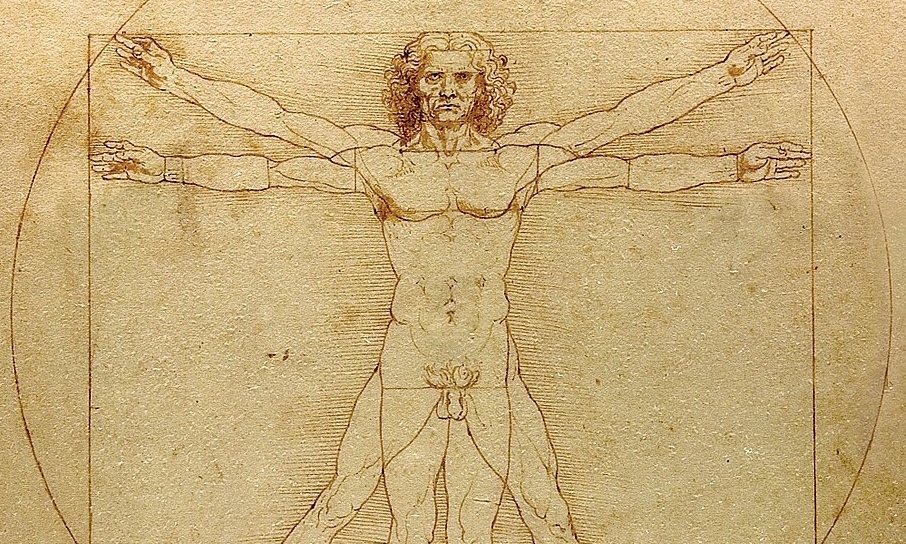Imagine for a moment… standing atop a mountain after having spent the morning hiking to the summit and being overwhelmed by the clouds that envelope you at the peak. Imagine… holding your child for the first time and feeling tears trickle down your face as you giggle along with the smiling infant. Imagine… standing in a busy intersection, surrounded by countless people and becoming “overwhelmed” like Thomas Merton “with the realization that I loved all those people.”1 Imagine… kneeling outside the Santiago de Compostela Cathedral after having walked over 600 miles and being overwhelmed by the experiences that have journeyed with you to this moment. Imagine… working and serving with people who have been marginalized in our world and “seeing and adoring the presence of Jesus…” as Mother Theresa experienced “in the distressing disguise of the poor.”2
This is Christophany.
When we encounter these ‘overwhelming’ moments, we are experiencing the “mystery of Christ,” which Raimon Panikkar suggests, “is the mystery of the whole of reality.”3 These intimate moments with reality requires critical discernment as these moments of Christophany reveal the “disclosure of Christ to [our] human consciousness.”4 For it is in these moments when we know ourselves most intimately through an overwhelming mystical experience that unites our whole-self with what is greater and beyond.
For centuries, Christology has focused primarily on the figure of Jesus the Christ. Developed within the confines of the first century Greco-Roman world, the “Christology that has reached us today” has reduced the contributions of the Americas and the insights “of that of Asia, Africa, and Oceania has been practically nil.”5 As such, Christians lack a global, holistic perspective of Christ that does not permit a personal mystical encounter. It is time to “revisit the experience of the mystery of Christ in the light of our times—to recognize the kairos of the present.”6
This “revisiting” does not mean a dismantling of centuries of Christology, rather it suggests a more dynamic encounter that places the Holy Spirit on an equal Trinitarian playing field with God and Christ. Christophany recognizes the importance of a deep incarnation that “reaches beyond the person of Jesus… to encompass the whole biological world of living creatures and the cosmic dust of which they were composed.”7 By developing a Christophany that encompasses a Trinitarian Christology, Panikkar “intends to offer an image of Christ that all people are capable of believing in, especially those contemporaries who, while wishing to remain open and tolerant, think they have no need of either diluting their ‘Christianity’ or of demanding their fidelity to Christ.”8
Jesus is dead, yet Christ is risen. However for far too long, Christians have shackled Christ to Jesus and have thus forced Christ to die on the cross along with Jesus. With the death of Jesus and the death of Christ, Christians relegated Christology to a culture of foreign conquerors and invaders that used christological images as a means for war and a weapon for colonization.9
It is time now to allow Christ to rise and recognize the value that even Jesus knew: that he needed to leave. “[Jesus] had not come to remain, but to remain in us in the most perfect form, not as a more or less welcomed guest foreign to us but in our very being.”10 By vacating the Earth, Jesus “allowed the Spirit to bestow our identity on us” to give life to a Christophany that “illuminates every being” to achieve the “maximal actualization of our true identity.”11 This illumination of our full potential in Christophany “is the epiphany of… our role in the universe.”12
While all of this might sound heretical, the truth however is that every human person has already experienced the mystical wisdom of this epiphany. The Saints and Mystics have spoken of these mystical experiences for centuries, but their saintly-distance makes these encounters seem impossible. Rather than focusing on those in heaven, allow me to take a moment to recognize the mystical heavens that surround us every day.
First, a personal mystical experience. In the summer of 2016, I was fortunate enough to walk the Camino de Santiago across Spain. For over a month, I traveled the 600 mile pilgrimage from St. Jean Pied de Port, France to Santiago de Compostela, Spain. My bones ached. My muscles spasmed. My mind screamed. Several days I felt like quitting, and yet the next day I would rise again and join my fellow pilgrims along the road. On one particular day, my blisters had become so large that they covered the entirety of the soles of my feet. As I walked, I could feel them bleeding with each step and feel the pain shoot up my legs causing my knees to buckle under the weight of my pack. When I finally arrived at an albergue—a hostel exclusively for pilgrims—a women met me at the bottom of the stairs, grabbed my pack, and helped me up to the common room. Noticing my pain, she placed me in a rocking chair, handed me a warm cup of tea, and after asking permission in broken English, she carefully removed my socks. As I sipped on my tea, she slowly began to wash my bloodied feet, dress the wounds, and then carefully massaged my legs with oil. When she was finished, she helped me to my mattress and instructed me to lie down for a nap. After I awoke, I looked around the small building, but she was no where to be found. I had not thanked her. I had not even known her name. Few words were spoken during our time together, and yet in those moments we were deeply and intimately connected.
Second, a mystical experience from a friend. Two very dear friends of mine after years of being together, finally decided to get married. Their wedding was joyful as it brought together two groups of families and friends to witness the celebration of their loving union. While excited to create a family, they struggled to get pregnant. Months of cheerful anticipation would be cheerlessly diminished with one quick miscarriage diagnosis. A second attempt. A third attempt. Finally, after more attempts to count a young boy screamed into existence. Surrounded my family, the boy laid in the arms of his mother and father. Eyes glazed over with tears. The baby coos as his eyes meet that of his parents, and the room is silenced with smiles as mother and father behold their beautiful creation. In that moment, in the space that filled the room, each person was connected to the intimate expansion of love.
When we gaze upon the birth of a new born child, or feel the rush of wind envelop us upon a mountain top, or forget the distance between stranger and friend, or feel breath escape our lungs as we are succumbed with awe by the wonder of a moment, we are become entangled with the “Mystical Body” that God created.13 When we recognize this mystery of Christ that is present in all reality, we experience Eucharistic unity from within ourselves that is in communion with the whole of creation. These mystical moments are what all of creation desires. As Practical Theologian, Courtney Goto writes, “human beings hunger for revelatory experiencing because it is of God, it calls deeply to us, and it summons to awareness what is usually unrecognized.”14
When we learn to take seriously Raimon Panikkarr’s hermeneutical approach to creation we recognize that we are standing within the kingdom of heaven.15 Thus is becomes impossible to separate ourselves from ourselves, one another, or let alone God. As German mystic Dorothee Sölle articulated:
What takes place in the encounter with God is that the searching ends not with the finding, but with being found. God was always already standing behind me, even when I was rushing in the other direction.16
This “rushing” through creation only to “find ourselves” in creation is the is our mystical experience of Christophany. We do not become dissolved into one another, rather like the Trinity we stand uniquely as our own, but in the space, the “abyss,” that once was separate, “there is a meeting between the finite and infinite, the material and the spiritual, the cosmic and the divine.”17 When we encounter this expansive mystery and comb through the confusion of our lives, we recognize that “everything is holy and can reveal meaning” because through the reality of Christ “everything is interconnected in a web of meaning.”18
The work of Raimon Panikkar, the work of process and phenomenological theologians, the work of the mystics, and the experiences of women and men who recognize the encounter of God in every moment of their lives brings hope to our divided world.
May our world see the ties that bind us.
May our Church imagine the possibilities of a universal embrace of Christophany.
And May God find us in this struggle.
- Merton, Thomas. Conjectures of a Guilty Bystander, 153-154. New York: Image Books, 2009.
- Teresa, Mother. In the Heart of the World: Thoughts, Stories & Prayers, 33. Novato, California: New World Library, 2010.
- Panikkar, Raimon. Christophany: The Fullness of Man. Translated by Alfred DiLascia. Maryknoll, 140. NY: Orbis Books, 2007.
- Panikkar, Raimon. “A Christophany for Our Times.” The Thirty-Fifth Annual Robert Cardinal Bellarmine Lecture, 5. October 9, 1991.
- Panikkar, Christophany, 4.
- Panikkar, Christophany, 7.
- Johnson, Elizabeth A. “Jesus and the Cosmos: Soundings in Deep Christology.” In Incarnation: On the Scope and Depth of Christology, edited by Niels Henrik Gregersen, 138. Minneapolis: Fortress Press, n.d.
- Panikkar, Christophany, 9.
- Panikkar, Christophany, 4.
- Panikkar, Christophany, 124.
- Panikkar, Christophany, 125.
- Panikkar, “A Christophany for our times,” 20.
- Panikkar, “A Christophany for our times,” 19.
- Goto, Courtney T. The Grace of Playing: Pedagogies for Leaning into God’s New Creation, 3. Eugene, OR: Pickwick Publications, 2016.
- Panikkar, Christophany, 84.
- Sölle, Dorothee. Dorothee Söelle: Essential Writings, 39. Maryknoll, NY: Orbis Books, 2006.
- Panikkar, Christophany, 189.
- Moore, Mary Elizabeth. “Incarnational Teaching.” In Teaching from the Heart: Theology and Educational Method, 93. Minneapolis: Fortress Press, 1991.



Bobby, you are truly an extremely talented writer. I always enjoy reading your blog.
Thank you!!
LikeLike